The blue star juniper is an attractive plant that’s easy to grow and care for. If you have this popular plant in your garden, it’s good to know about suitable companion plants to grow alongside or in front of your blue star juniper.
What Is a Blue Star Juniper?
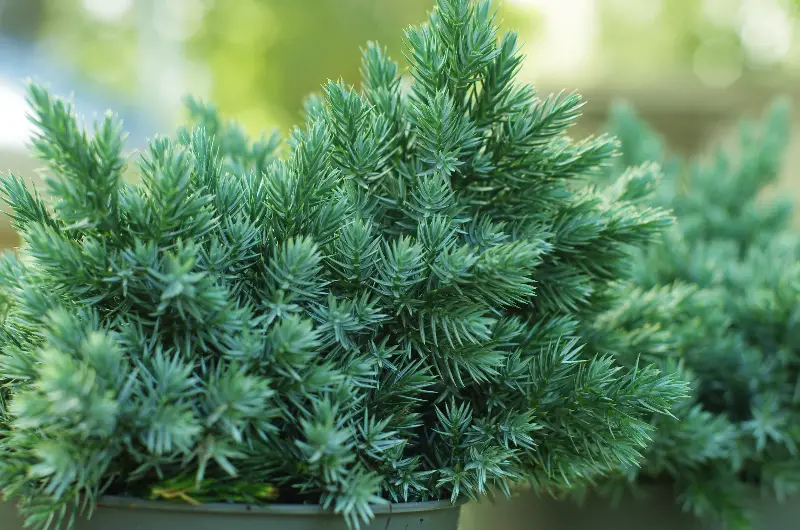 The juniperus squamata blue star juniper is a slow-growing, small shrub. This drought-resistant evergreen plant is dome-shaped, with needle-like leaves in a variety of colors, ranging from blue to silver to lilac.
The juniperus squamata blue star juniper is a slow-growing, small shrub. This drought-resistant evergreen plant is dome-shaped, with needle-like leaves in a variety of colors, ranging from blue to silver to lilac.
Blue star juniper shrubs work well as groundcovers when paired with companion plants that blend in well with the blue star juniper.
The Best Blue Star Juniper Companion Plants
Many different ground cover plants pair well with blue star junipers, balancing, contrasting, or highlighting the striking coloring and enhancing the natural beauty of the juniper.
Companion Plants With Blue Foliage
Many plants have leaves or flowers in different shades of blue, making them good companion plants for the blue star juniper. Placing shrubs of similar colors close together is aesthetically pleasing because the colors tend to blend in, creating a tranquil effect.
These plants, available from your local garden center, make the best companion plants for blue star junipers.
Sedum
One good companion plant for blue star juniper is sedum. There are numerous species of sedum that are easy to grow and care for, and look good alongside blue star junipers.
Like the blue star juniper, the sedum likes full sunlight and needs moderate watering. Both plants need low levels of fertilizer and will be damaged by over-fertilizing.
Sedums come in short and tall varieties. The shorter varieties make the best blue star juniper companion plants. Planting short varieties of sedums is easy and is best achieved by placing the plant on the ground. New root shoots will begin to sprout at the point where the plant makes contact with the soil.
Plant tall-stem sedum varieties by breaking off a small piece of the stem to insert into the ground. The stem will soon take root and a new plant will start growing.
Euphorbia
Euphorbia is native to many parts of Africa, Asia, Europe, and America. This plant does best as an indoor plant, but is also a good companion plant outdoors for the blue star juniper.
Euphorbia comes in a wide range of varieties, with over 2000 species. Although many of these are large trees, most are low bushes, shrubs, or groundcovers.
Euphorbias thrive in most types of soil and have similar sunlight needs to blue star junipers. Both plants should be planted in full sun soil and are drought tolerant. They don’t need heavy watering.
Euphorbias and blue star junipers combine well and look attractive when planted together in a rock garden.
Yucca
The yucca, originating in the southwestern United States, is a perennial shrub with long, pointed leaves. Available in a variety of species, the yucca is another good blue star juniper companion plant.
The evergreen yucca is a shrub that does well in many different climates, and can survive in temperatures as low as 10°F. However, this plant needs well-draining soil and should be planted in full sun.
Some species of yucca can grow as tall as 3 feet, and they need enough space to reach their full growth potential. The pointed leaves are needle-sharp, so take care to avoid injury.
Agave
The agave is a drought resistant succulent plant with long, spiky-rimmed leaves that grow in a rosette formation. Native to North America, this perennial plant needs little water and thrives in arid areas.
The century plant, or Agave Americana, is a species of agave that does well in a variety of growing conditions. This plant is easily identified by its unusual white stripe and is popular for its strikingly beautiful flowers.
Agaves need full sunlight and can be planted directly on the ground, in well-draining sandy soil.
Silver Mound
The silver mound, also known as the sea form artemisia, is a suitable companion plant for the blue star juniper. Native to Japan, this perennial, with its fine, silver-blue leaves, is ideally suited to warmer climates.
Plant silver mounds as blue star juniper companion plants in a herb garden or rock garden, where these evergreens are excellent as edging or ground cover. Full sun ensures healthy growth with abundant silver foliage.
The low maintenance silver mound is drought-tolerant and does well in dry, mildly fertile soil with good drainage.
Cut off the small yellow flowers of the silver mound regularly so that they don’t inhibit foliage growth.
Veronica
The Veronica, also often called the speedwell, is a perennial plant that comes in a variety of colors such as purple, blue, or pink, and is easy to cultivate. The flowers, with their long, pointed petals, last a long time, adding vibrant color to your beds.
Veronicas are hardy plants that easily tolerate arid conditions, but need regular watering during the driest months of summer.
Plant the speedwell in a warm spot with full sun to partial shade. This plant is not fussy about soil conditions and does well in a wide range of soil pH levels.
Partridge Feather
Partridge feather is an attractive groundcover that complements the blue star juniper and makes an excellent companion plant. Although this mound-shaped small shrub has yellow flowers, the silver-blue, feathery leaves make the partridge feather one of the best companion plants for the blue star juniper.
The leaves of the partridge feather have an interesting texture, with a soft, velvety feel.
Standing about 3-5 inches tall and with a width of 15-24 inches, the fully grown partridge feather offers a colorful contrast to the blue star juniper. Most gardeners enjoy being able to choose whichever companion plants to cultivate as blue star juniper companion plants, according to their personal preferences.
Plant the partridge feather in full sun to partial shade, in soil with good drainage. Overly wet conditions cause damage to the roots, eventually causing root rot. These plants are ideally suited to rocky gardens.
Silver Bush
The silver bush, also known by its other name, the cushion bush, originated in Southern Australia. This plant is popular for its beautiful foliage. The stems and leaves are a shimmering silver color, glistening and sparkling in sunlight.
With its small, bright yellow flowers, the cushion bush contrasts beautifully with the blue star juniper, making these two plants perfect companions. They have the same characteristics as far as light and water requirements are concerned.
Both the cushion bush and the blue star juniper do well in dry conditions and don’t need much specialized attention. The cushion bush doesn’t have a long life span, and individual specimens need to be replaced regularly.
Dusty Miller
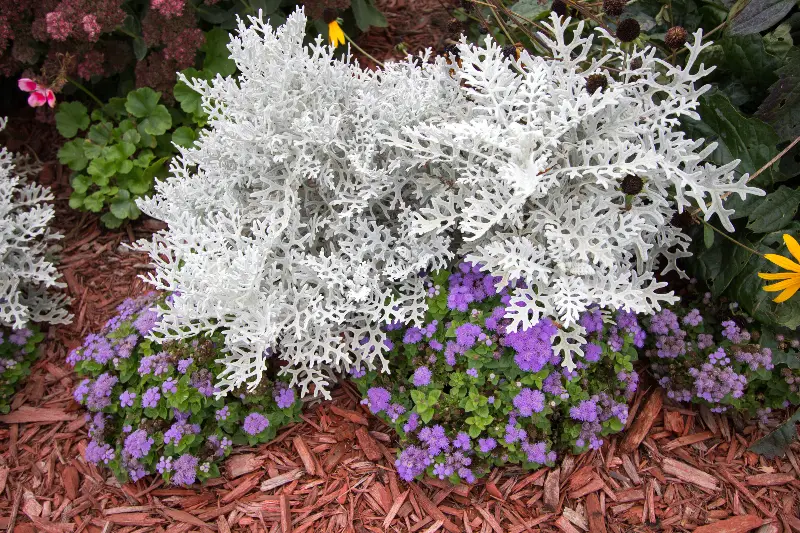 The dusty miller, with its shimmery silver leaves that look like lace, is a popular plant with many landscapers. As a companion plant for many other plants, the dusty miller is a wonderful ground cover.
The dusty miller, with its shimmery silver leaves that look like lace, is a popular plant with many landscapers. As a companion plant for many other plants, the dusty miller is a wonderful ground cover.
This plant is both frost and drought resistant, making it an ideal blue star juniper companion plant in areas with severe weather conditions. Plant dusty miller in well-draining soil in a sunny spot with afternoon shade.
Lavender
With its pretty, long-stemmed pale purple flowers, lavender makes a perfect blue star juniper companion plant. This drought-resistant plant does well in arid conditions, thriving in full sun to partial shade.
Cultivate lavender seedlings, planting in well-draining soil mixed with organic matter.
Other Blue Colored Plants
There are many other species of plants that bloom with blue or lilac colored flowers and make good blue star juniper companion plants. The varying shades of blue and lilac complement each other, enhancing the beauty of each plant.
There are very few rules about what can or can’t be planted as a companion plant. Choose whichever plants work best in your garden. Here are a few suggestions of blue-flowered plants to plant alongside the blue star juniper in both small gardens and larger spaces.
Hydrangea
The hydrangea, also known as the hortensia, is a colorful bush that loves full sun in the morning and partial shade in the afternoon. The color of the hydrangea’s blooms varies according to the acidity or alkalinity of the soil, but the most common colors are varying shades of blue and purple.
With its large blue or purple heads and long flowering season, the hydrangea is a perfect companion plant for the blue star juniper. Water hydrangeas regularly to prevent the leaves from wilting.
Hydrangeas make excellent flowers for putting in vases, and cutting off the heads encourages new growth. Cut hydrangeas back every year at the end of the flowering season, to ensure prolific blooms the following year.
Iris
The iris is a well-loved plant with over 200 different varieties. Named after Iris, the Greek goddess of the rainbow, this plant comes in numerous striking colors, such as yellow, white, and varying shades of blue, lilac and purple. The blue-toned varieties of iris work well as a companion to the blue star juniper.
Irises are among the early blooming perennials and are easy to grow. These plants enjoy heat and will thrive in full sun to partial shade. They are hardy plants and grow well in most U.S. gardening zones.
Because irises multiply rapidly, they should be separated every 2-3 years to prevent overcrowding. Separating irises will ensure that the plants last for many years.
Agapanthus
The agapanthus, commonly known as the lily of the nile, is a long stemmed purple flower with a large head.
The deep purple color makes the agapanthus a great blue star juniper companion plant, because their colors are so similar. Agapanthus plants are tall, making them an ideal backdrop for blue star junipers in flower beds.
Blooming from the beginning of spring to the end of summer, the Agapanthus is easy to grow and does well in full sun to partial shade. This plant needs a lot of water in the summer months to prevent it becoming dehydrated.
The best time for planting lily of the nile is in spring, to give the plant time to take root and become established before the winter cold settles in.
Cornflower
The cornflower, sometimes affectionately known as the bachelor’s button, is an annual flowering plant originally found in many parts of Europe. Because the cornflower grows, so freely and easily, it was considered to be a weed in certain areas where it would invade cornfields, giving the plant the name cornflower.
Cornflowers are easy to maintain, but must be pulled out and discarded at the end of the flowering season. Replant every year for a breathtaking show of small blue flowers throughout the summer.
Cornflowers do well as a companion for the blue star juniper because both plants have similar coloring. Sprinkle cornflower seeds among your blue star juniper for a lush mingling of two stunning blue flowers.
Wisteria
The wisteria plant grows in vines, with large clusters of hanging blooms in a striking show of lilac and purple. Wisteria makes the perfect blue star juniper companion plant, with the purple of the wisteria flowers accentuating and complementing the blue of the juniper.
Wisterias grow easily and rapidly, and need to be tamed and guided along a support structure to prevent the plant from spreading uncontrollably. Thread the wisteria tendrils through a trellis or garden fence to encourage steady growth. The resulting hedge offers a wonderful background for the blue star juniper.
Plant Wisterias between April and October for the most prolific results. Take care with wisteria if you have animals. After the wisteria flowers die off, this plant produces pods that are toxic. These pods are highly dangerous when eaten by dogs or cats.
In Conclusion
Planting the blue star juniper together with companion plants creates an eye-catching display that gives your garden a striking appearance. There are many blue star juniper companion plants that can enhance the look of your flower beds. Choose from a broad selection of suitable plants to act as a leafy friend to your blue star juniper.

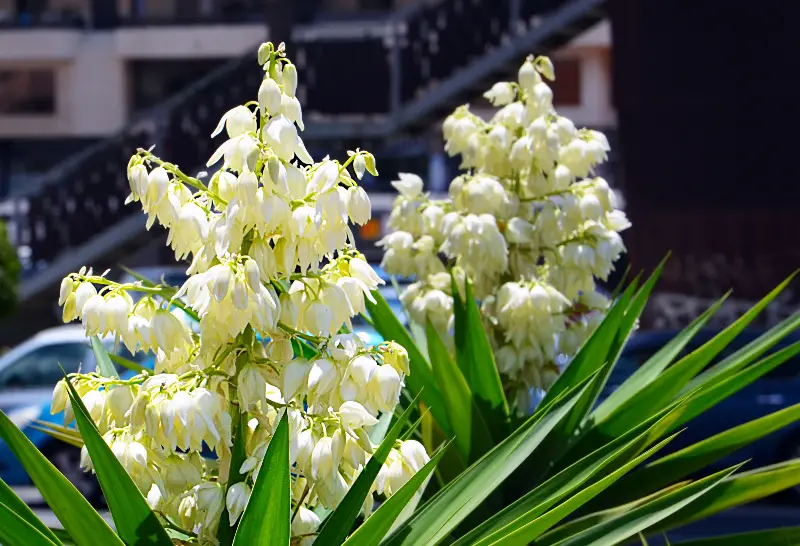
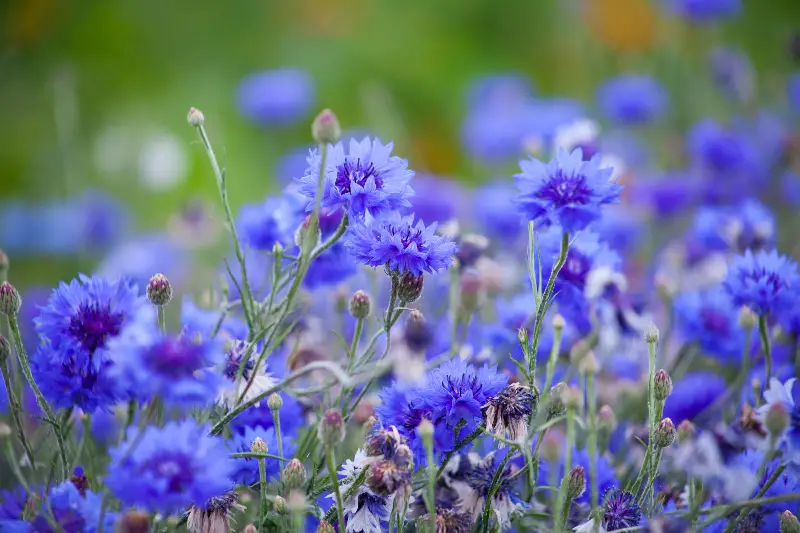

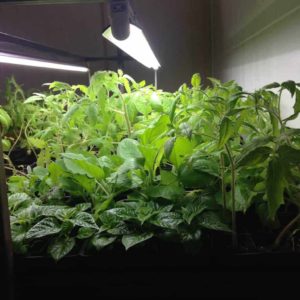
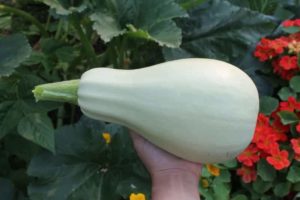
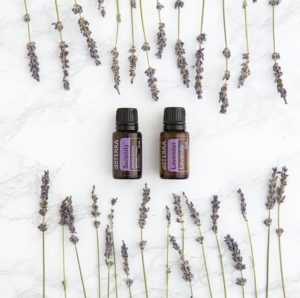


Thx
Blue star juniper looks awesome with friends like sedum, euphorbia, and lavender. They all need little water and love the sun, making your garden bright and colorful. Perfect for a sunny spot!